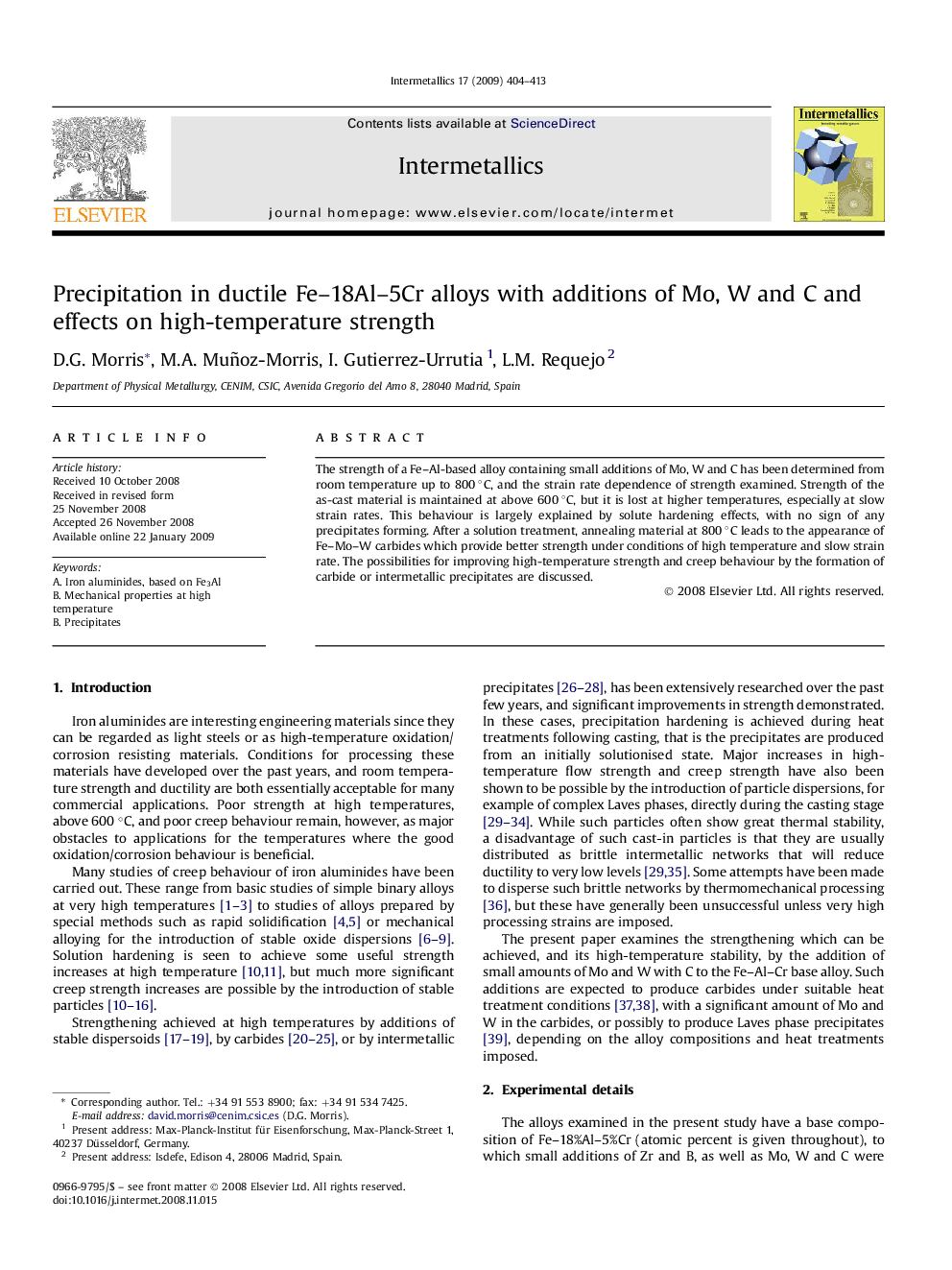| Article ID | Journal | Published Year | Pages | File Type |
|---|---|---|---|---|
| 1601216 | Intermetallics | 2009 | 10 Pages |
The strength of a Fe–Al-based alloy containing small additions of Mo, W and C has been determined from room temperature up to 800 °C, and the strain rate dependence of strength examined. Strength of the as-cast material is maintained at above 600 °C, but it is lost at higher temperatures, especially at slow strain rates. This behaviour is largely explained by solute hardening effects, with no sign of any precipitates forming. After a solution treatment, annealing material at 800 °C leads to the appearance of Fe–Mo–W carbides which provide better strength under conditions of high temperature and slow strain rate. The possibilities for improving high-temperature strength and creep behaviour by the formation of carbide or intermetallic precipitates are discussed.
